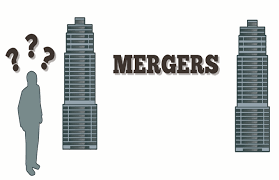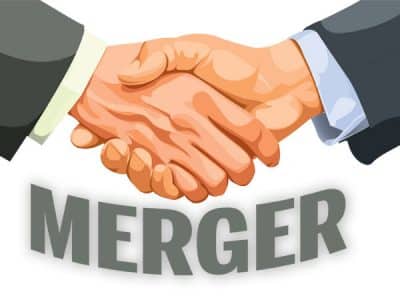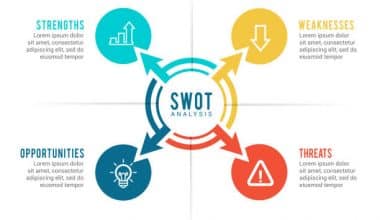Businesses and companies merge for several reasons. some merge just to increase a company’s reach, while others merge to grow into new segments, or gain market share. Business and company Mergers are different from acquisitions. However, acquisitions, unlike mergers, are usually not voluntary and involve one company actively purchasing another. Nevertheless, this article will bring to your understanding the types and examples of mergers.

If you need to understand anything concerning mergers, types, examples, and other related topics, then this article is for you.
Merger
A merger is an agreement that joins two existing companies into one new company. However, there are various types of mergers and also several reasons why businesses merge. Additionally, a merger is a corporate means to join with another company and operate as a single legal entity.
However, Mergers are generally done to increase a company’s reach, grow into new segments, or gain market share. Indeed, the major reason for mergers is to increase shareholder value. Nevertheless, during a merger, companies have a no-shop clause to avoid purchases or mergers by additional companies. Also, the businesses agreeing to mergers are often equal in terms of size and scale of operations.
Practical Approach to Business/Company Mergers
A merger is the voluntary coming together of two companies on broadly equal terms into one new legal entity. Hence, the businesses that agree to merge are often equal in terms of size, customers, and scale of operations. This is why the term “merger of equals” is sometimes used. Acquisitions, unlike mergers, are usually not voluntary and involve one company actively purchasing another.
Furthermore, after a merger, shares of the new company are shared with existing shareholders of both original businesses.
However, let’s discuss briefly the types of mergers.
Types of Mergers
1. Congeneric/Product extension merger
This type of merger arises between companies operating in the same market. However, the merger occurs in the addition of a new product to the existing product line of one company. As a result of the merger, companies can obtain a larger customer base and increase their market share.
2. Conglomerate merger
The conglomerate type of mergers is the joining of companies operating in unrelated activities. However, the merger will take place only if it increases the wealth of the shareholders.
3. Market extension merger
Here, companies operating in different markets, but selling the same products, merge in order to access a larger market and larger customer base.
4. Horizontal merger
A horizontal merger happens between companies operating in the same industry. However, this merger is generally part of consolidation between two or more competitors offering the same products or services. Therefore, resulting in the elimination of competition, hence, economies of scale can be achieved.
5. Vertical merger
A vertical merger happens when businesses trading in the same industry, but at different levels in the supply chain, merge. However, such mergers occur to improve synergies, supply chain control, and efficiency.
Now, let’s discuss briefly some of the examples of mergers.
Examples of Mergers
Mergers have helped a lot of businesses to sustains their going concern in the business world. Here are some perfect examples of mergers and also are still functioning to date.
Walt Disney Co. and Pixar Mergers
This merger example arises from the entertainment industry. In 2007, the Walt Disney Company acquired Pixar Entertainment for $7.4 billion. Moreover, this is a merger that makes sense at every level.
Walt Disney has been the market leader in family entertainment for decades, creating masterpieces such as Cinderella, and The Lion King. However, Pixar was a newbie on the market but made a huge impression with its popular movies like Toy Story.
Nevertheless, the synergy between the two companies was obvious even to random viewers. The merger allowed Disney to confirm its brand as the biggest provider of family-friendly movies. Also, it gave Pixar great improvement to its production process and release two new movies per year. Moreover, the post-merger Pixar films, including Up and WALL-E, have been largely successful.
In addition, the possibility is strong that this merger will go down as one of the most lucrative in history as Disney Pixar continues to flourish and increase.
Sirius and XM Radio Mergers
The merger among satellite radio’s two largest providers almost didn’t occur. However, in 1997, the FCC granted licenses to these two companies only if they would not merge. Therefore, when the merger was declared in 2007, it depended solely on the FCCs willingness to reverse its earlier conditions.
Furthermore, Sirius XM has seen an unfit success and in many ways, the perfect example of a horizontal merger. In 2019, Sirius XM stock went up to a 12-year high. Also, the company now owns more than 30 million subscribers. It recently announced its acquisition of the streaming music service Pandora.
The merger made the new company attract celebrities like Oprah Winfrey, Martha Stewart, and Howard Stern, whose reputation brought in new subscribers. However, Sirius XM extends to seek out new acquisitions and we anticipate the company will continue to evolve.
Google and Android
This is one popular example of successful vertical mergers. It is the union between tech giant Google and Android. This merger enabled Google to set itself as the number one search provider in the world.
The acquisition occurred in 2007 when Google acquired Android for the relatively low price of $50 million. However, Google spent the next three years using the Android technology to developing a new operating system for mobile devices.
It is obvious that the Google-Android merger was a huge success. In 2018, about 88% of all new mobile phones sold were powered by Android. However, this large market share would not have been possible without Google’s merger with Android.

Advantages of a Merger
Here, are some of the advantages of business and company mergers.
1. Increases Market Share
When companies merge, the new company reaches a larger market share and leads in the competition.
2. Reduction in Cost of Operations
Companies can gain economies of scale, such as bulk buying of raw materials, hence resulting in cost reductions when they merge. However, the investments in assets are now spread out over a larger output, which leads to technical economies.
3. Expands business into new geographic areas
A company seeking to extend its business in a particular geographical area may merge with another similar company operating in the same area to get the business started.
4. Avoids Duplication
Some companies manufacturing similar products may merge to avoid duplication and eliminate competition. It also results in reduced prices for the customers.
5. Prevents closure of an unprofitable business
Business mergers can save a company from going bankrupt and also save many jobs.
Disadvantages of a Mergers
Here are some of the pitfalls of business and company mergers.
1. Creates gaps in communication
The companies that have accepted to merge may have diverse organizational cultures. It may result in a gap in communication and affect the overall employee’s performance.
2. Creates unemployment
In an aggressive merger, a company may decide to drop the underperforming assets of the weaker company. It may result in employees losing their jobs.
3. Raises prices of products or services
A merger results in low competition and a larger market share. Therefore, the new company can gain a monopoly and increase the prices of its products or services.
Conclusion
In summary, a merger is the voluntary coming together of two companies on broadly equal terms into one new legal entity. Hence, the businesses that agree to merge are often equal in terms of size, customers, and scale of operations.
Mergers FAQ
What is merger with an example?
Here are some perfect examples of mergers and also are still functioning to date.
- Walt Disney Co. and Pixar Mergers
- Sirius and XM Radio Mergers
- Google and Android
What is a merger in business?
A merger is an agreement that joins two existing companies into one new company. However, there are various types of mergers and also several reasons why businesses merge.






